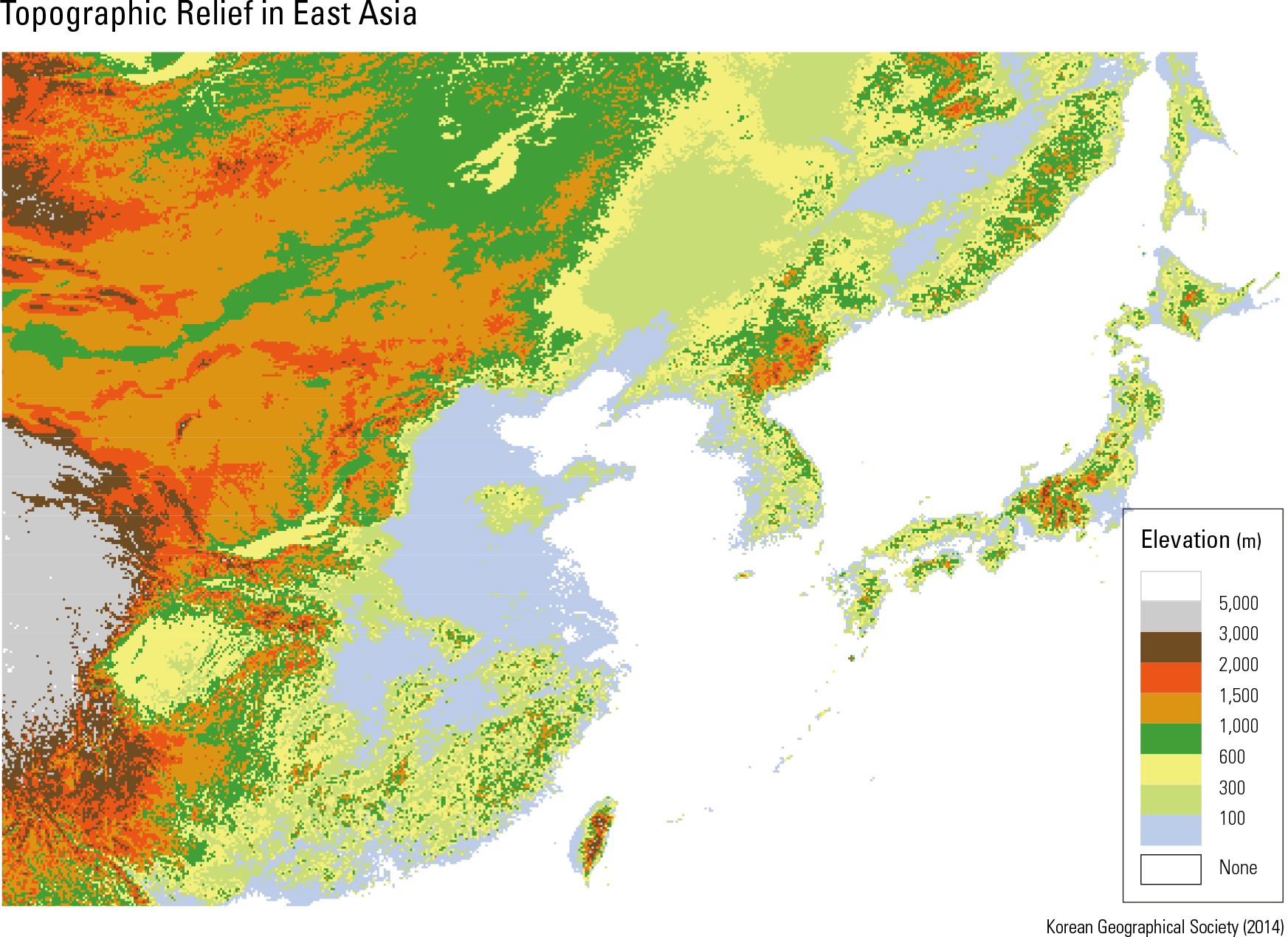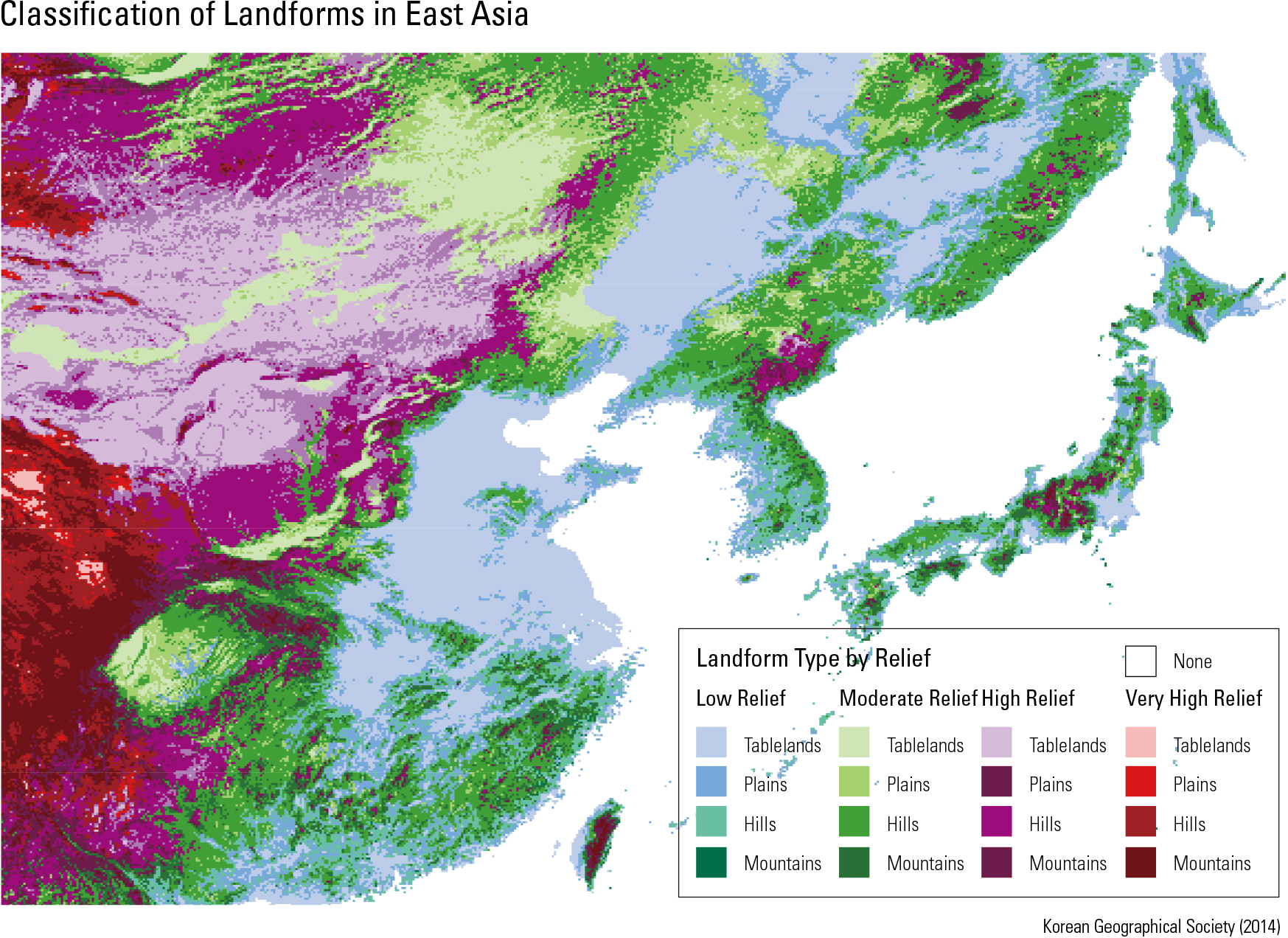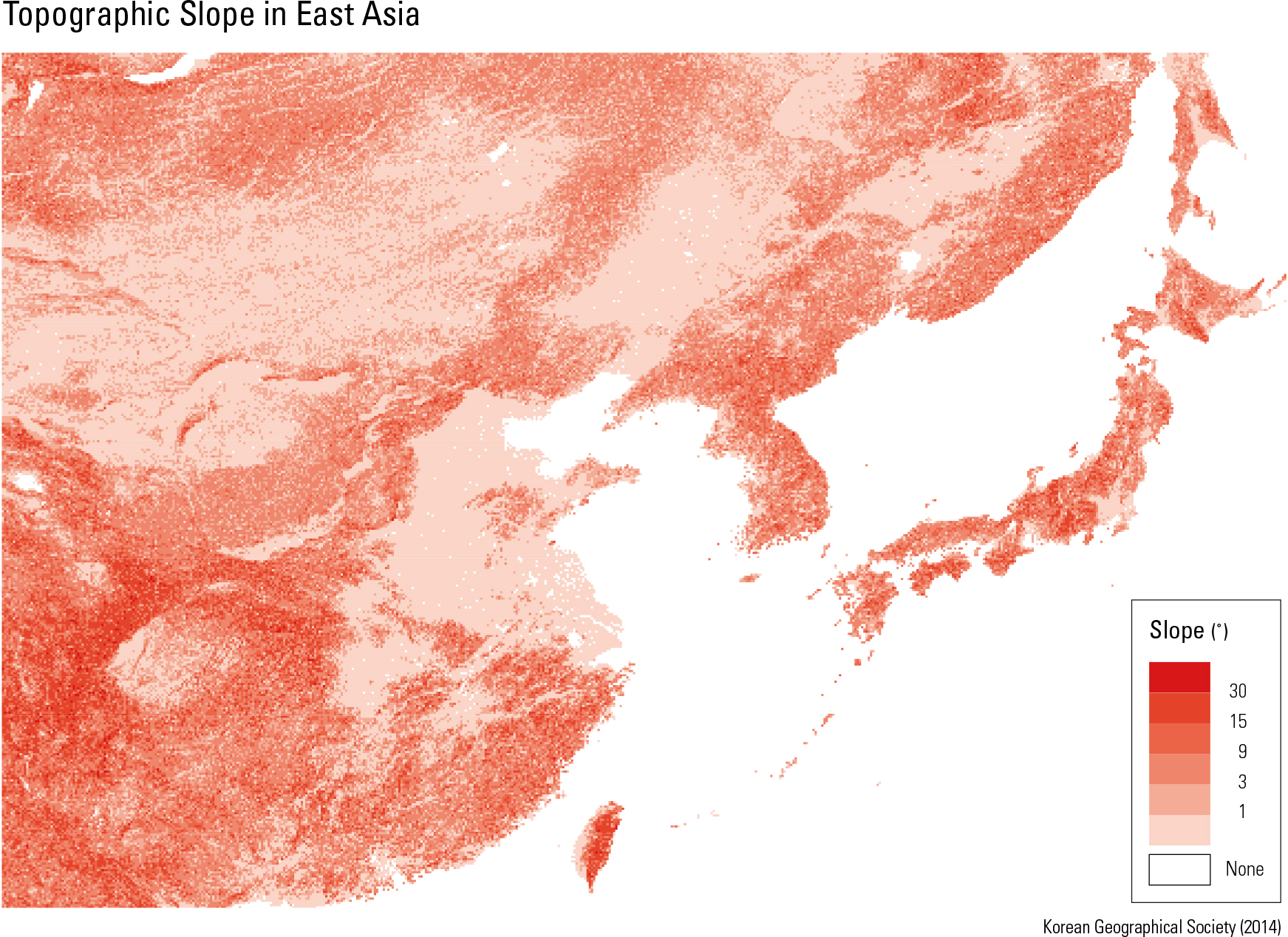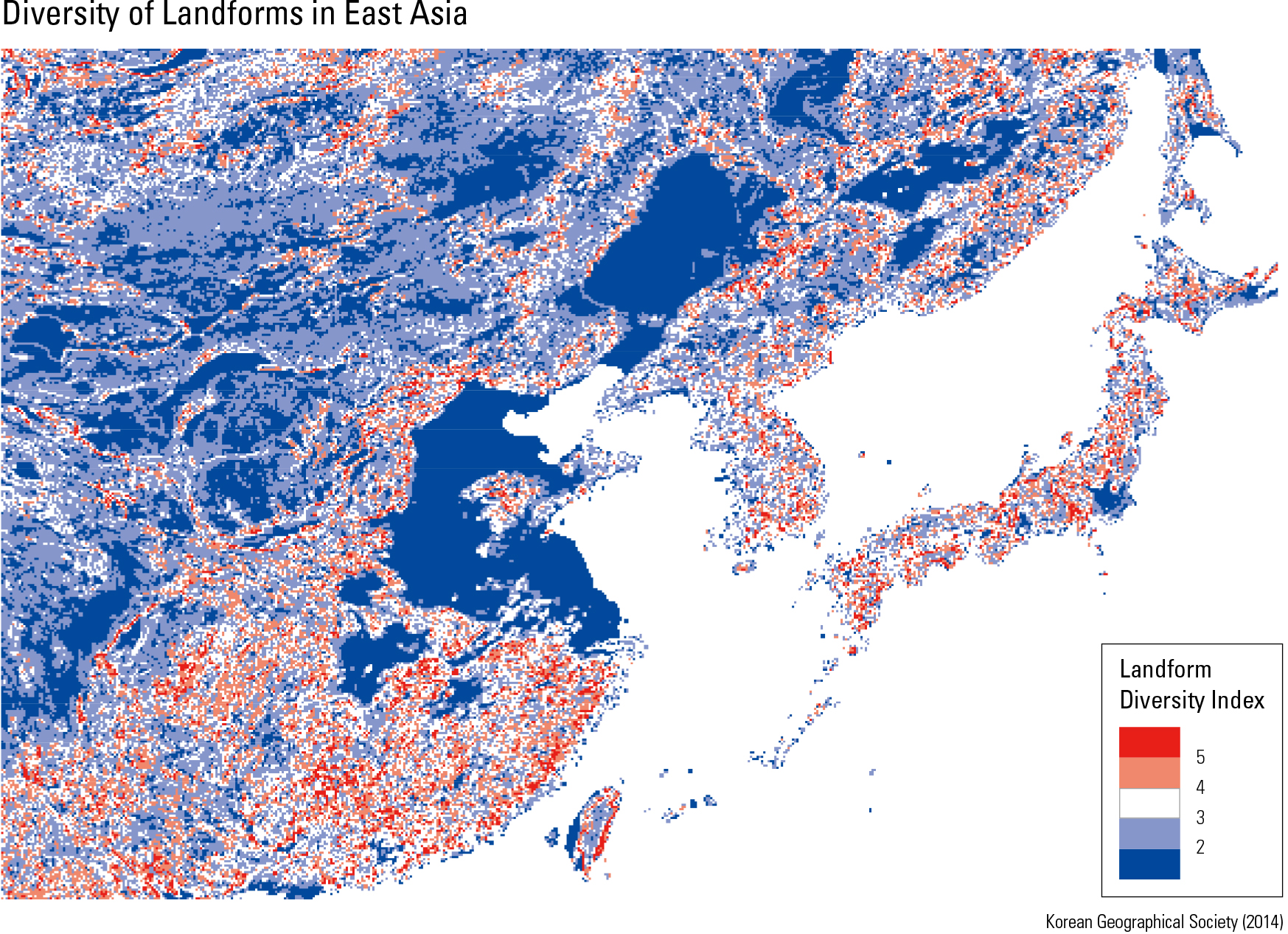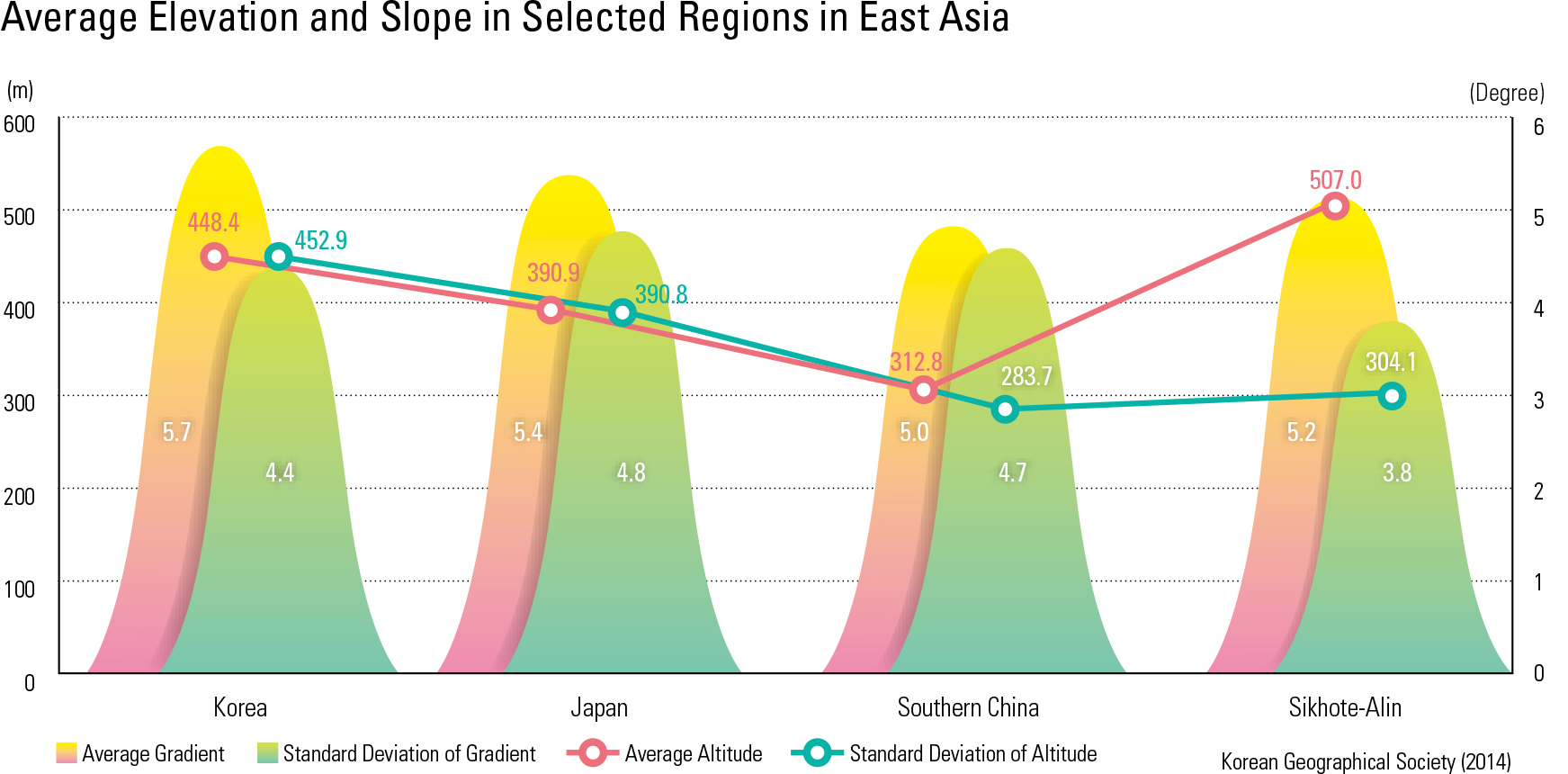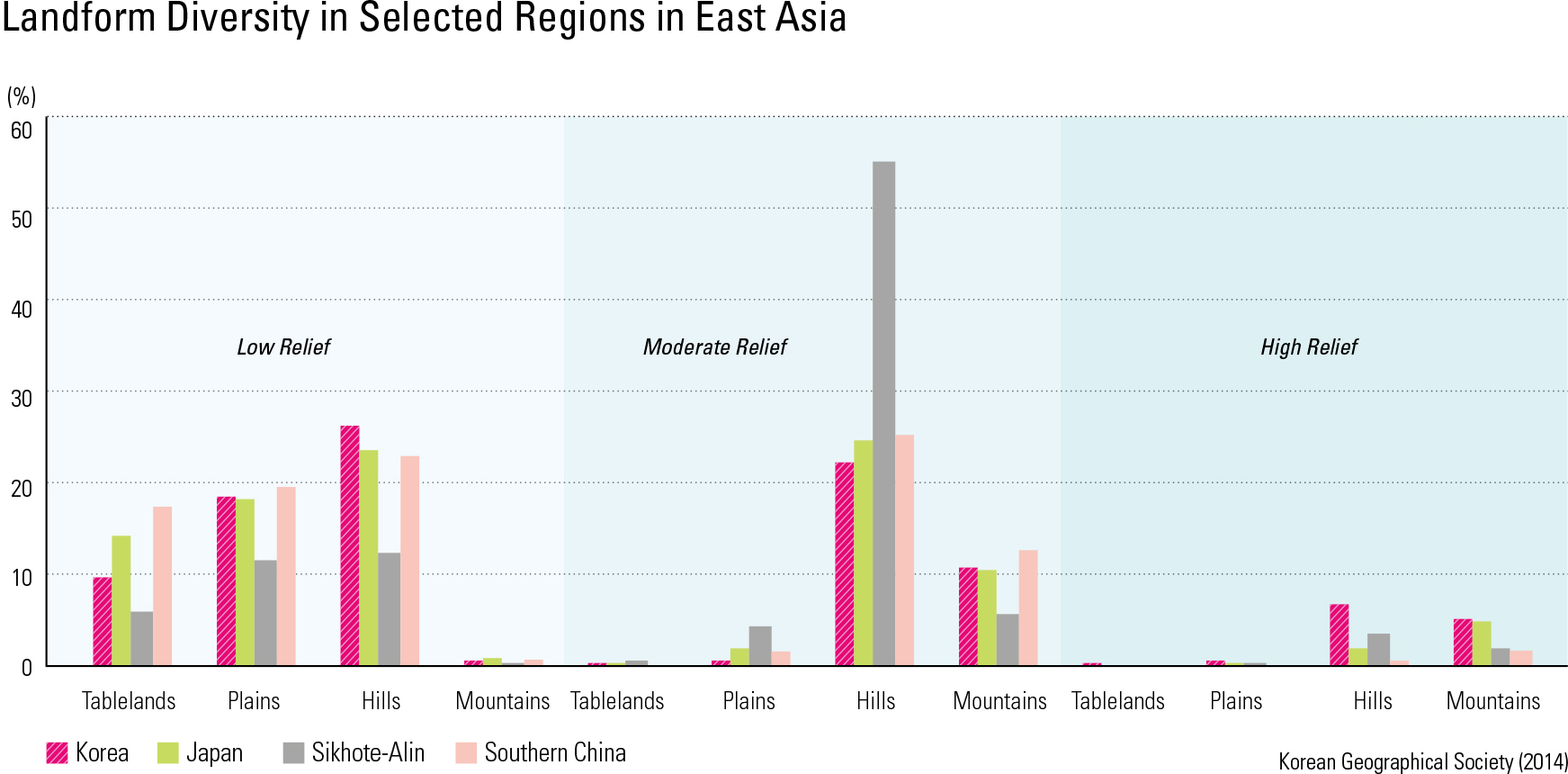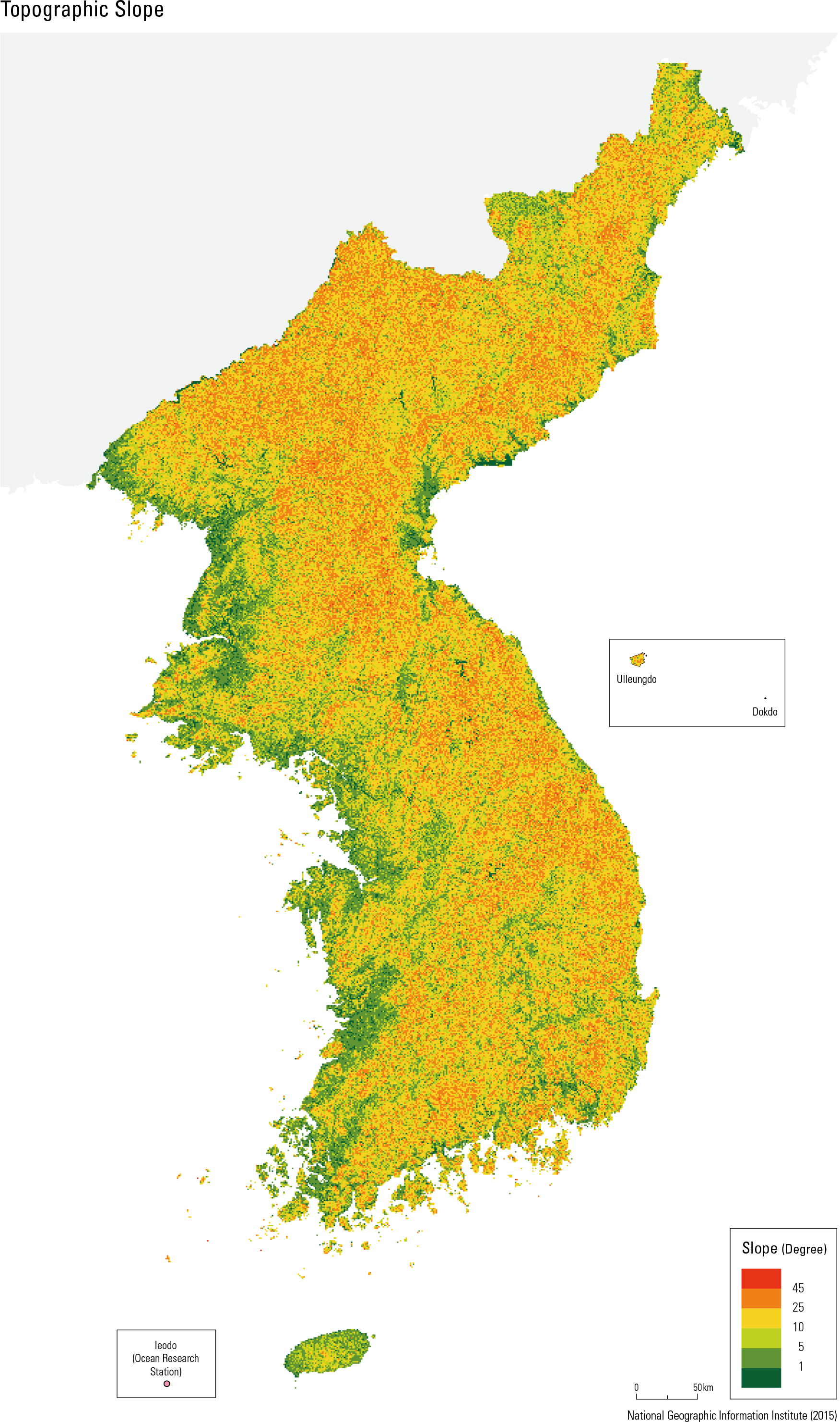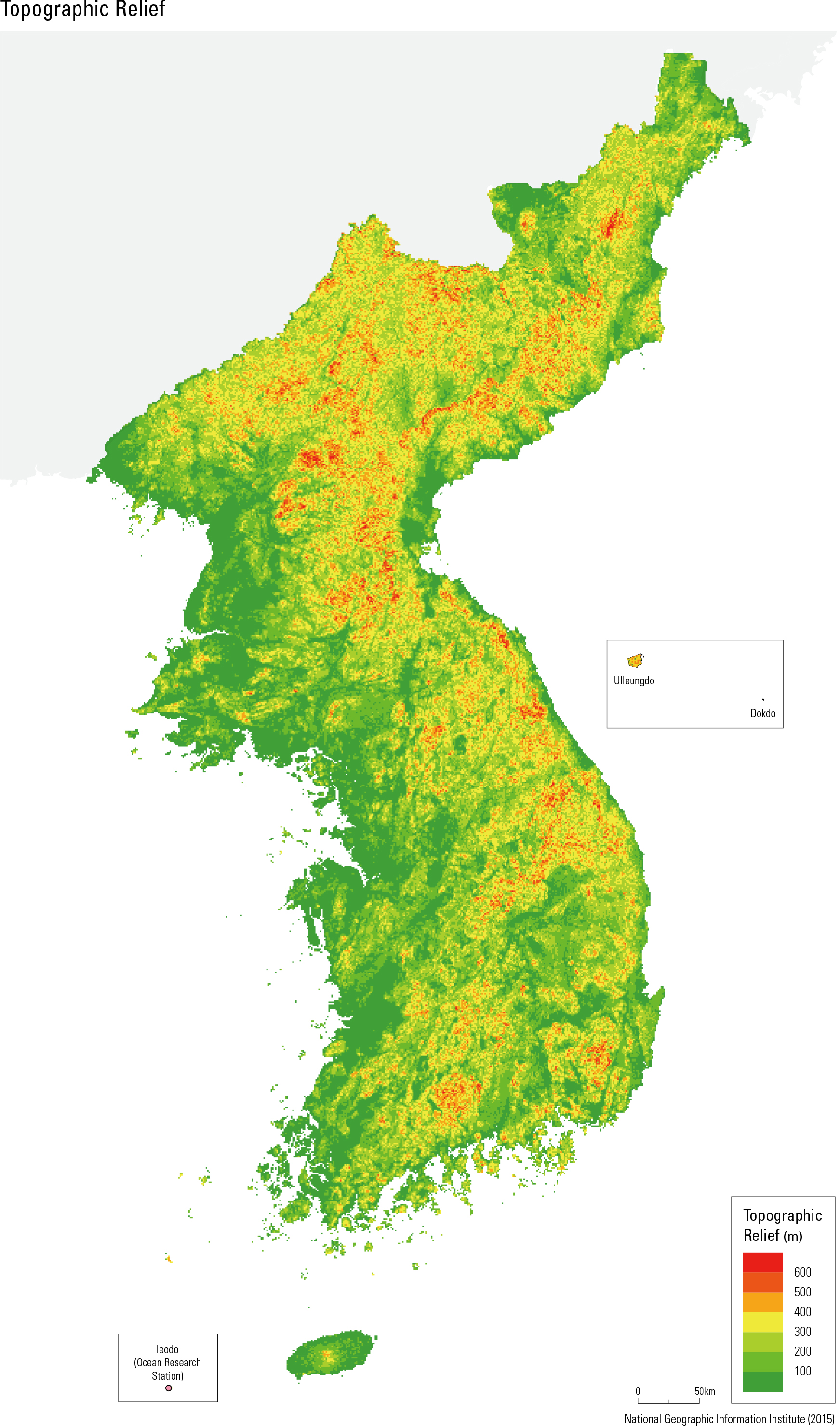English II
NNW-SSE orientation. It is assumed that this characteristic resulted from the formation of the East Sea, which was heavily influenced by the geological structure of the continent. The peninsu- la also has relatively steep mountainous areas and diverse landform features, even though it does not have high elevations. Another characteristic of Korean topography is that the boundaries between mountainous areas and sedimentary atlands are rather unclear. This phenomenon can be explained by slow tectonic movement and relatively small sedimentary atlands across the peninsula. According to the Landform Classification, 77.5% of the Korean Peninsula is comprised of low-level mountainous areas (26.2%), medi- um-level mountainous areas (22.1%), low-level flatlands (18.5%), and medium-level mountain areas (10.7%). The Landform Diversity Index – the number of different landform units within a 100 km2 area – for Korea displays an average of 2.78 with a standard deviation of 0.95. Compared to East Asia, which has an average of 2.27 with a standard deviation of 1.06, Korean landforms exhibit higher overall diversity, but have less vari- ation within certain areas. When considering the topography of the Kore- an Peninsula, the Sikhote-Alin mountain range, Southern China south of the Yangtze River, and Japan, the average elevation in descending order is as follows: Sikhote-Alin (507.0 m), the Korean Peninsula (448.5 m), Japan (390.9 m), and South- ern China (312.8 m). However, the average slopes of each area show a different order; Korea (5.7 ̊) has the highest average slope, followed by Japan (5.4 ̊), Sikhote-Alin (5.2 ̊), and Southern China (5.0 ̊). Landform diversity has yet another order, with Southern China (3.0) showing the highest value, followed by Japan (2.9), Korea (2.8), and Sikhote-Alin (2.6). Overall, the Korean Peninsula has high average elevation and average slope, but has the least change in slope among the four areas. While Korea has more low-level moun- tainous areas, Japan and Southern China display a larger percentage of low-level flatlands and medium-level mountainous areas. This indicates that abrupt changes in slope are less common in Korea. In comparison to East Asia as a whole, although the geographic features of the Korean Peninsula follow the continental geological structural lines of NE-SW, they also exhibit a perpendicul
page_2 |
